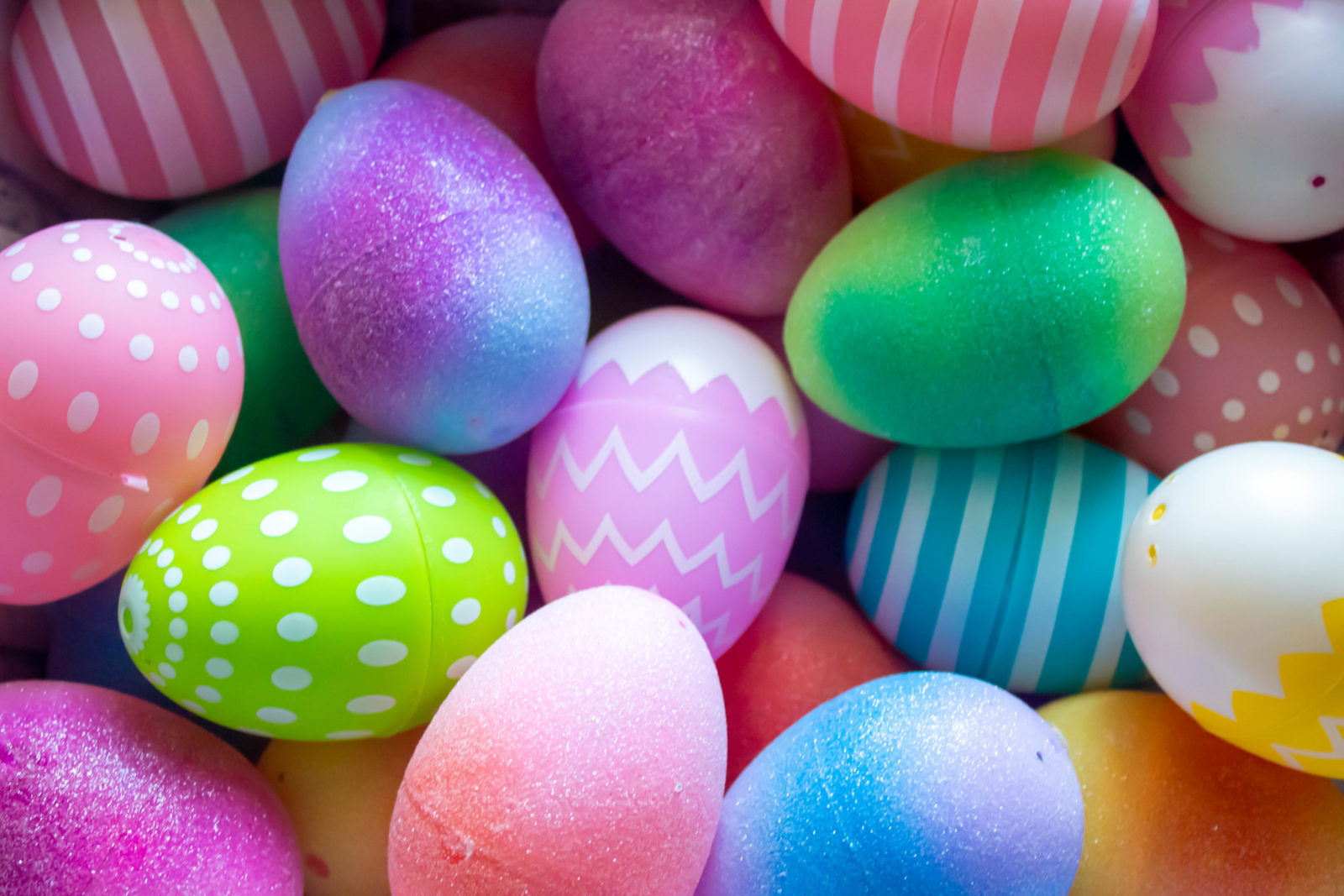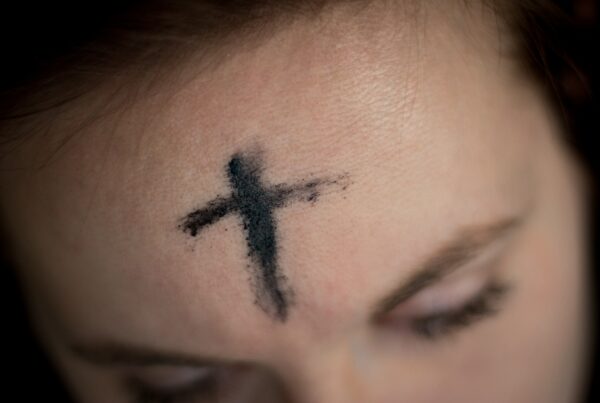E aster is the most significant celebration of the year for Christians. We remember how God’s son, fully human and fully divine, shared the kingdom of God, showed us how to live, and took our punishment as his own through his death on the cross. Yet the magnitude of this gift and the holiness of Lent, Good Friday, and Easter can get obscured by Easter bunnies, egg hunts, and the anticipation of baskets overflowing with stuffed animals, jelly beans, and chocolate bunnies. While many families enjoy these Easter activities, teaching children about Easter’s true meaning can feel like an afterthought.
So how do we bring an understanding of Jesus’s life, death, and resurrection to young children?
While there is nothing inherently wrong with Easter baskets, treats, and Easter egg hunts, making Easter a special celebration of Jesus’s life, death, and resurrection brings a richer understanding of what Jesus did for us even to young children. As you celebrate the gift Jesus gave to us, you create space for the Holy Spirit to build lifelong faith in Christ in children’s hearts.
Here are a few ways you can teach children about Easter and celebrate the resurrection story as a family. I do many of these Easter activities with preschool students and have found that they are meaningful at a young age.
Tell the Easter story together
You don’t have to do something fancy to make Easter meaningful. The best thing you can do with children is also the simplest: tell the story of Easter. Immerse them in the events of Jesus’s life. Invite them to be part of the storytelling with you.
Pinterest is full of adorable crafts and impressive activities to make Easter special. You might feel pressure to do something Instagram-worthy. But it’s important to remember that the story of Easter is more than enough for us (children and adults) on its own.
Easter takes on deeper meaning as children hear about Jesus’s life and teachings, wonder at the miracles he performed, and reflect on the lessons he taught in his sermons and parables. And children grow in their love for Jesus as they journey through the story of the final events in Jesus’s earthly life.
Inviting children into a story-based worship experience
Story-based worship is a meaningful way for children to both learn Bible stories and connect with God. Young Children and Worship by Sonja M. Stewart and Jerome Berryman is a great tool for bringing God’s Word to life for children ages 3-8. You may be familiar with the Children and Worship program many churches use based on this book. While it was developed with churches in mind, the Children and Worship program offers helpful guidance for inviting children into immersive, story-based worship in homes and classrooms, too.
Related: Choosing a Children’s Bible that Will Form Faith for Life
Using simple repetitive language and wooden figures, children enter into a Bible story as teachers share what is happening and then move wooden figures. After children hear a story, they can tell it themselves as a response. You may not have wooden figures at home, but you could use other figurines or objects in your home to help you tell the story.
When children revisit stories, they come to a more in-depth understanding of God’s Word each time. Pondering “I wonder…” questions helps them put themselves into the story. The story of Easter, as told in Young Children in Worship, is a beautiful and moving way to hear God’s Word and experience his sacrificial love.
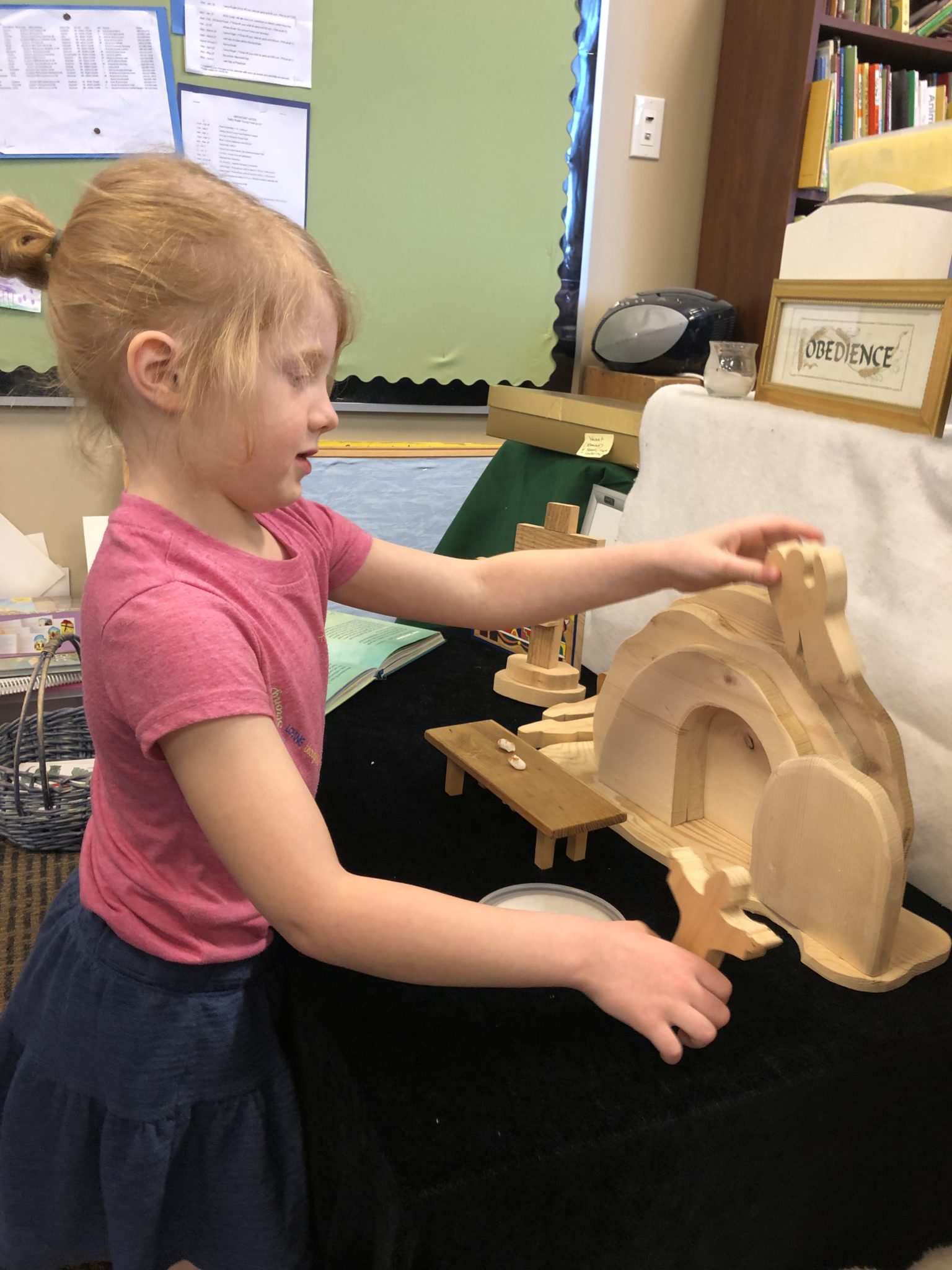
Recommended Bible Storybooks and Lent/Easter Books
Here are some books that can help you to share the resurrection story with younger children. For more guidance on choosing a children’s Bible and children’s Bible recommendations, check out this article on choosing a children’s Bible that will form lasting faith.
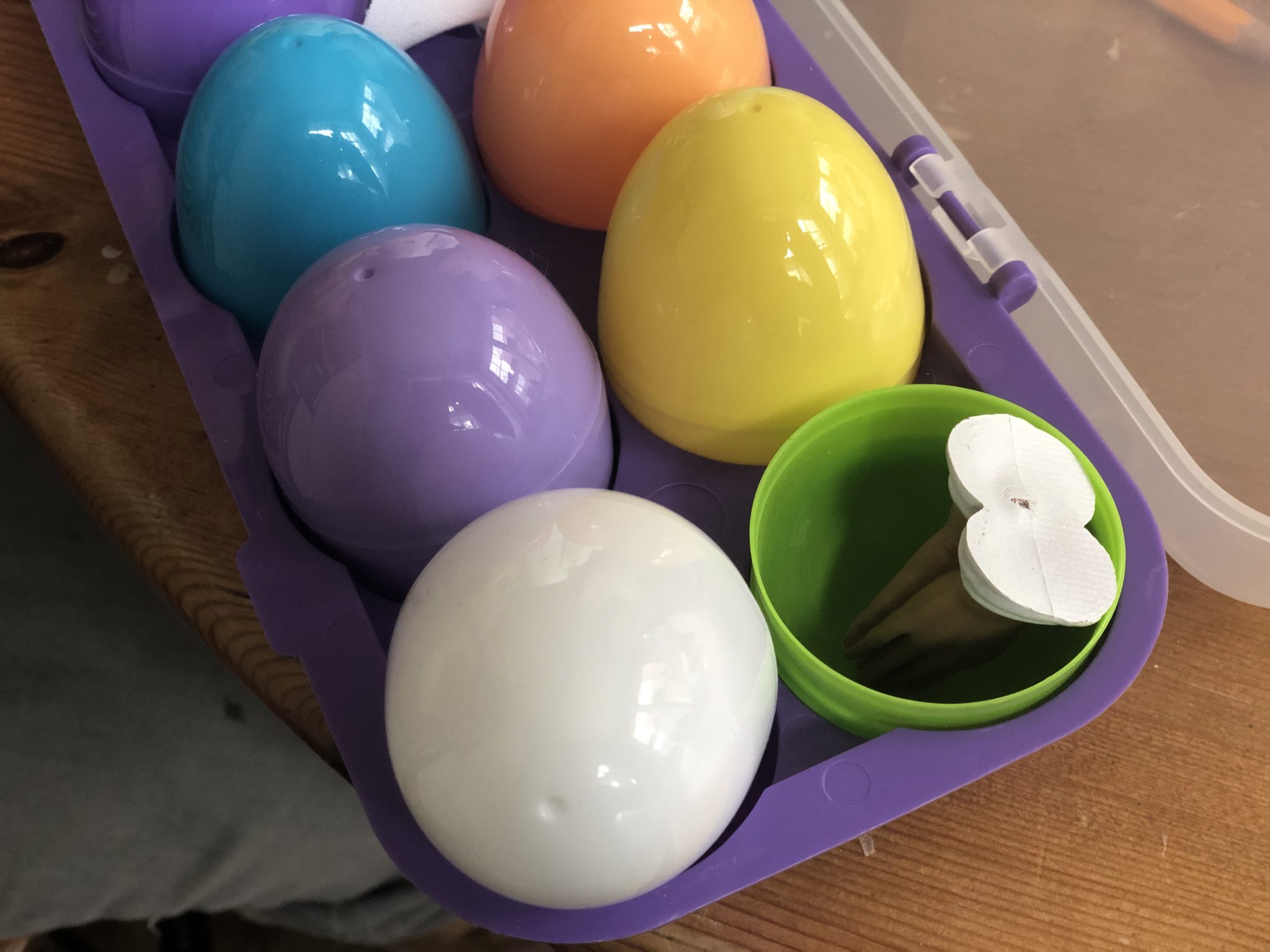
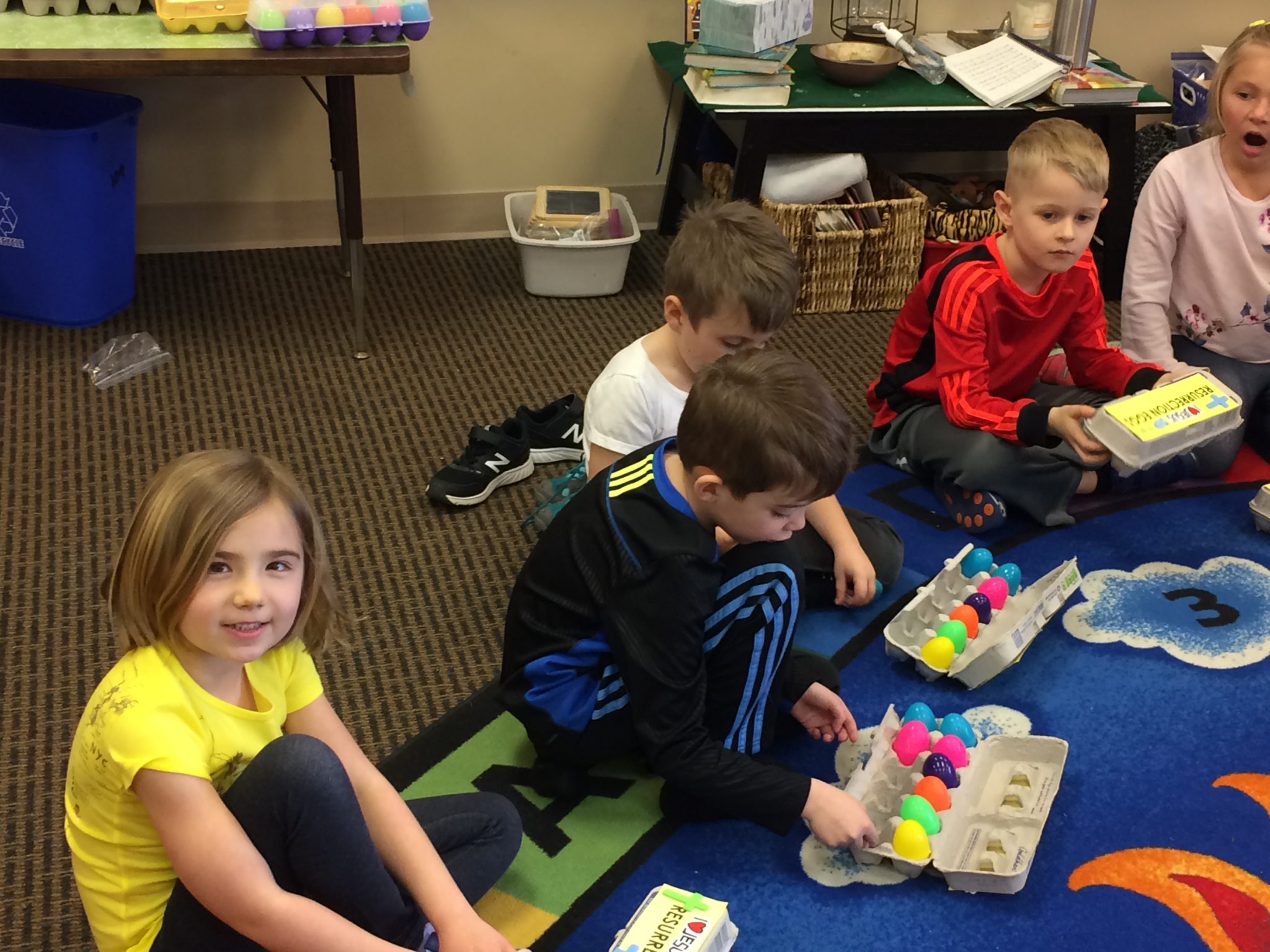
Resurrection eggs engage children of all ages in the Easter story. In each egg is a symbol that represents an important event in the Easter story. Making a set of resurrection eggs or opening a pre-made set during Holy Week bridges Easter egg hunts and baskets with the real meaning of Easter.
Easter activities like making resurrection eggs are valuable because they turn the Easter story into something tangible that children can see and hold. This helps children connect the gift Jesus gave us with their real lives.
On Palm Sunday, we remember Jesus’s triumphal entrance into the city of Jerusalem. It is the start of Holy Week. Children experience the excitement of the crowds as they throw their coats down on the “road” and wave their palm branches cheering, “Hosanna in the Highest! Blessed is he who comes in the name of the Lord!”
In my classroom, I usually have a coworker dress up as Jesus and enter the “city” as we threw our coats down and cheered. In my church, we have had the children process into church waving their palm branches as they go up and down the aisles. Real palm branches can be ordered from a florist. You don’t have to be in a classroom or a church to have a parade. You can also have a parade at home with your family, collecting branches in your backyard to be your “palm branches.”
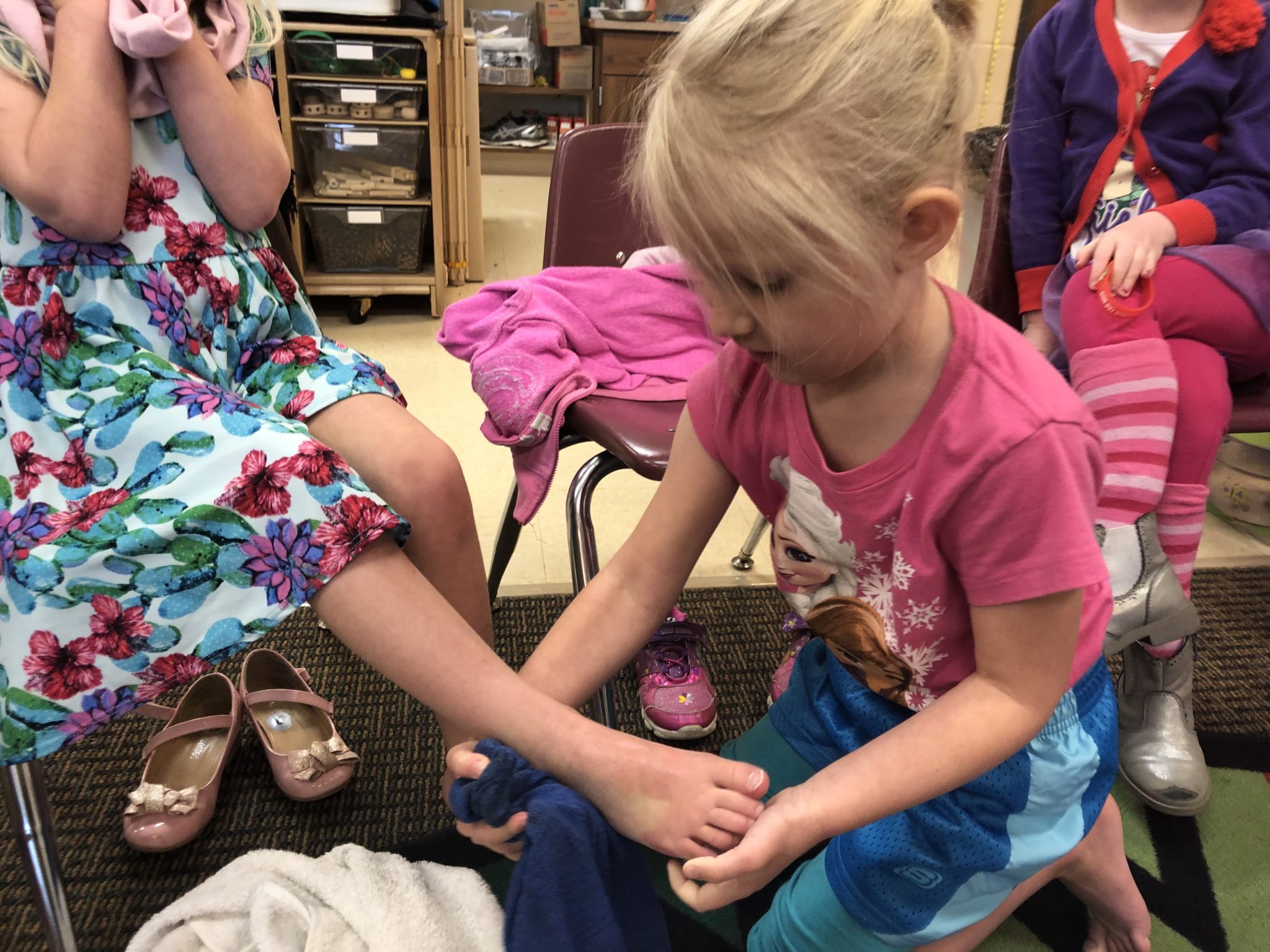
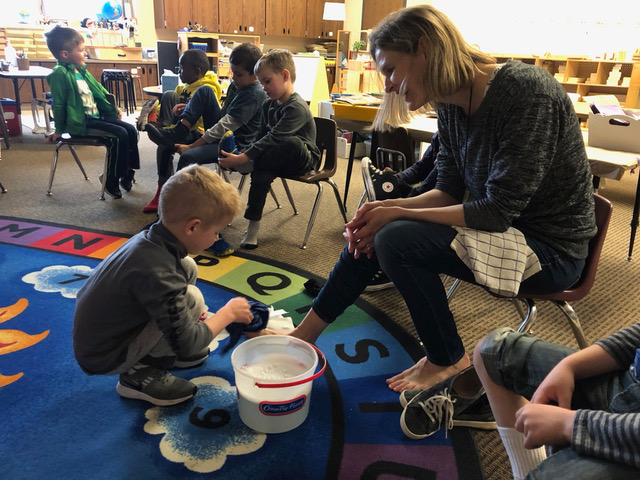
In John 13:1-17, Jesus washed the feet of his disciples, a job that was considered beneath even the servants. Then he told his disciples he was showing them how to serve others: “Go and do likewise.”
Share the story of Jesus washing his disciples’ feet with children. Make sure children understand what the roads were like when Jesus lived and walked the earth. They were dirty, dusty, and would have had animal droppings in the road. People in those days wore sandals, so their feet would get very smelly and dirty.
After you are finished telling the story, grab a towel and a container with soapy water and wash the feet of your child or children. Have each child wash the feet of another person (including your feet). Washing the feet of another person is a powerful reminder of Jesus’s example to serve others.
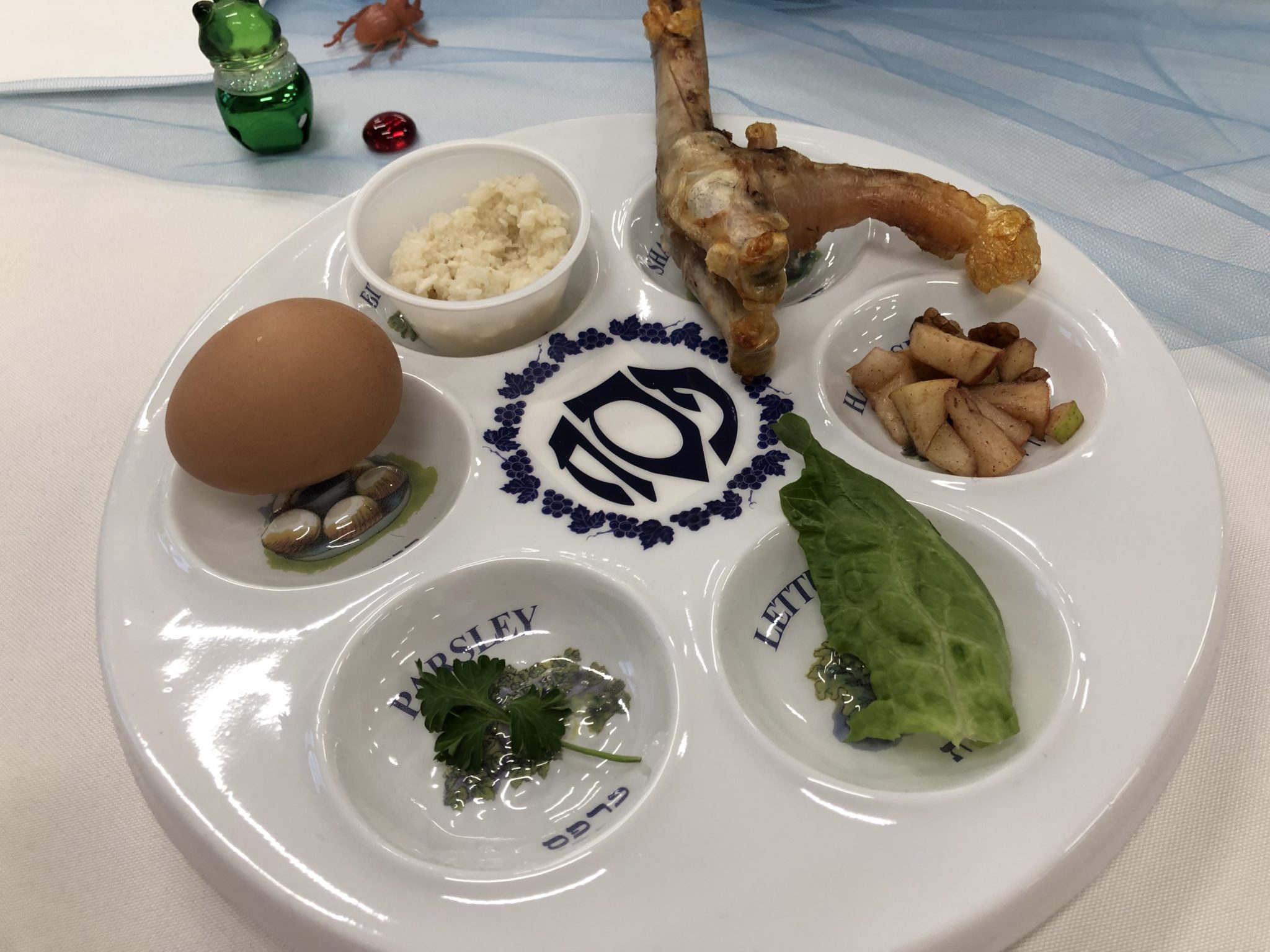
Jewish families celebrate the beginning of Passover with a Seder supper. During this special meal, they retell the story of how God led them out of slavery in Exodus. Participating in a Seder supper or a meal inspired by this tradition can help children today to understand the Christian tradition of the Lord’s Supper.
Scripture tells us that the last supper took place around the start of Passover, when Jews today have a Seder meal. Learning about the Jewish faith that Jesus and his early followers observed can also be a meaningful way for adults to think about what the Lord’s Supper and Easter mean to us. Learn more about this tradition and how your family can participate.
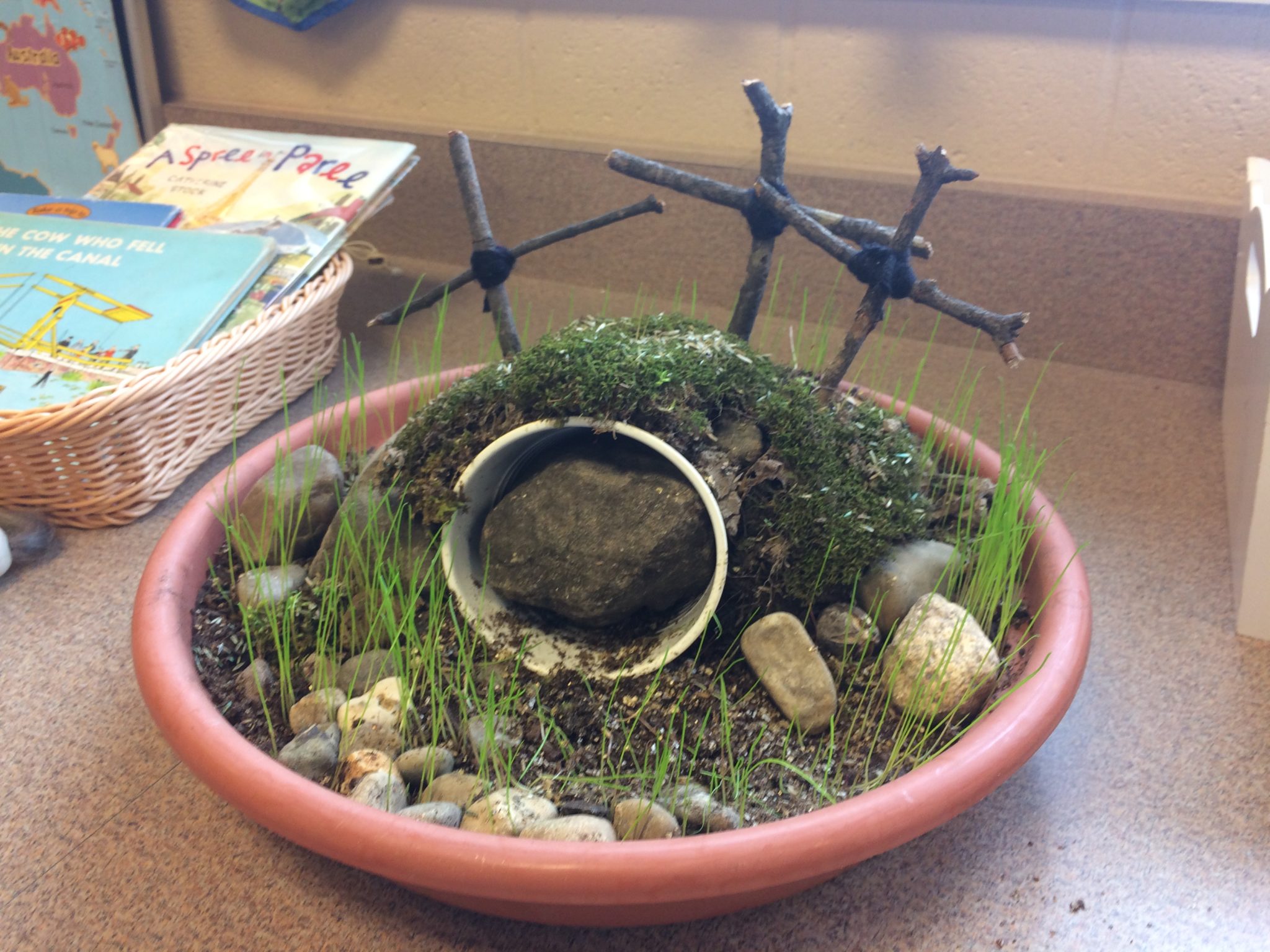
You will need:
- Terra cotta/clay mini pot (for the tomb)
- Terra cotta/clay tray
- Potting soil
- Small pebbles
- Grass seed
- Flowers (optional)
- Large rock (to cover mini-pot)
- Small sticks (to make crosses)
- Twine (to make crosses)
- Glue gun
- Spray bottle
Instructions:
- Place the small pot in the middle of the saucer and put the large rock in front of it.
- Form a mound of soil over your small pot and on either side.
- Arrange your small rocks in front and around the large one.
- Sprinkle grass seed over the dirt and add a thin top layer of soil on top of the seeds. If you are going to include flowers for your garden, plant them in the soil.
- Tie the twigs together with twine to make three crosses and plant them in the dirt mound when they dry.
- Put garden in area with sunlight and water as needed.
Make resurrection rolls with your kids to celebrate. Not only are they fun to make and delicious, but they bring the message home: the tomb is empty!
On Easter morning, Mary, Mary Magdalene and Mary, mother of Salome, went to anoint Jesus’s body with spices. Instead, they met an angel who told them that Jesus was not there. He had risen from the dead. In this recipe, an empty “tomb” forms when the melted marshmallow sinks into the dough.
The tasty buttery cinnamon inside reminds us of the spices and oils the women brought to the tomb that day. The empty “tomb” in the middle of the roll is a visual reminder of Jesus’s empty tomb; this reminder has a sweet and delicious taste, reminding us of the joy of Jesus’s resurrection.
You and your children make the rolls using crescent rolls, marshmallows, butter, cinnamon and sugar.
Instructions:
- Open the can of crescent rolls. Unroll the dough and separate using the striations on the dough.
- Melt the butter in a microwave.
- Mix the cinnamon and sugar together in a small bowl.
- Dip each marshmallow in the melted butter and then the cinnamon-sugar mixture.
- Put each dipped marshmallow in the center of a crescent roll section. Next, close the crescent roll dough around the marshmallow and seal well.
- Dip the top of each wrapped marshmallow into the butter and cinnamon-sugar mixture and place on a baking sheet or in a large muffin tin.
- Bake in the oven at 375 degrees for 10-12 min.
Ingredients:
- 2 (8 oz.) cans of crescent rolls
- 16 large marshmallows
- ½ cup of butter
- 2 tablespoons of cinnamon
- ¼ cup of sugar
Worship together with Easter music for kids
- Wonderful, Merciful Savior (Cedarmont Worship for Kids 4)
- There is a Redeemer (Cedarmont Worship for Kids 1)
- Alive, Alive (Cedarmont Sunday School Songs)
- Ho, Ho, Ho, Hosanna, Ha, Ha, Hallelujah (SingHosannaVEVO)
- Christ the Lord is Risen Today (Cedarmont Kids)
- You Are My King (Amazing Love) (Cedarmont Worship for Kids 4)
- There is None Like You (Cedarmont Worship for Kids 4)
- How Can I Keep From Singing Your Praise? (Cedarmont Worship for Kids 4)
Kathy Ruiter
Kathy Ruiter is an experienced Christian educator and curriculum writer. She currently teaches preschool and young fives at Rockford Christian School in Rockford, Michigan.
